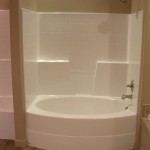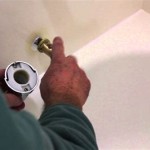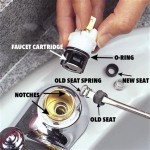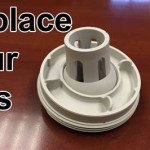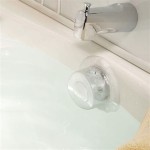Bathtub With Lion Feet and Legs on Wall: A Comprehensive Overview
The integration of a bathtub with lion feet or lion legs directly mounted on the wall represents a unique and often striking design choice in bathroom aesthetics. This approach blends the classic elegance associated with clawfoot tubs with a more contemporary and space-saving installation method. This article explores the various aspects of this design, including its history, benefits, installation considerations, design variations, and maintenance requirements.
Historical Context of Lion Feet Bathtubs
The clawfoot bathtub, characterized by its distinctive animal-inspired feet, originated in the late 19th century. Initially, these bathtubs were crafted from cast iron and enameled, providing both durability and a smooth, easy-to-clean surface. The lion's paw design became particularly popular during the Victorian era, symbolizing status, opulence, and a connection to classical artistic motifs. The feet elevated the tub from the floor, enhancing hygiene and facilitating cleaning underneath. The lion's paw design specifically was chosen because of its associations with strength, royalty, and a sense of timeless grandeur. These bathtubs were initially freestanding, requiring considerable floor space.
Over time, design variations evolved. While the traditional freestanding clawfoot tub remained prevalent, particularly in period-style homes, the concept of integrating the feet directly into the wall emerged as a solution to space constraints and modern design preferences. This adaptation retains the aesthetic appeal of the classic clawfoot while offering a more streamlined and integrated look within the bathroom.
Advantages of Wall-Mounted Lion Feet Bathtubs
Mounting bathtubs with lion feet and legs on the wall offers several practical and aesthetic advantages. Firstly, it optimizes space utilization, particularly in smaller bathrooms. By eliminating the need for the tub to stand entirely independently, more floor space is freed up, creating a more open and less cluttered environment. This is especially beneficial in modern urban dwellings where space is often at a premium.
Secondly, wall mounting simplifies cleaning and maintenance. The absence of a gap between the tub and the wall prevents the accumulation of dirt, mildew, and debris, making it easier to keep the bathroom clean and hygienic. This is a significant advantage compared to traditional freestanding clawfoot tubs, which can be challenging to clean beneath and around.
Thirdly, this design offers a modern twist on a classic aesthetic. It allows homeowners to incorporate the timeless elegance of lion feet bathtubs into contemporary bathroom designs, creating a unique and visually appealing focal point. The juxtaposition of classic and modern elements can result in a sophisticated and personalized bathroom space. Integrating the lion feet into the wall can also provide an opportunity to conceal plumbing fixtures, contributing to a cleaner and more streamlined appearance.
Finally, wall mounting can enhance the structural stability of the bathtub. By securing the tub directly to the wall studs, the weight is distributed more evenly, reducing the risk of wobbling or instability, particularly in older buildings with uneven floors. This added stability can contribute to the longevity and safety of the bathtub installation.
Installation Considerations and Technical Requirements
Installing a bathtub with lion feet and legs on the wall requires careful planning and precise execution. The first crucial step is assessing the structural integrity of the wall. The wall must be capable of supporting the combined weight of the bathtub, water, and the user. This typically necessitates reinforcing the wall studs and potentially adding additional support beams. A qualified structural engineer or contractor should be consulted to evaluate the wall's load-bearing capacity and recommend appropriate reinforcement measures.
Proper plumbing connections are also essential. The water supply lines and drainpipe must be strategically positioned to align with the bathtub's fixtures. Concealing these plumbing elements within the wall contributes to a cleaner aesthetic. This requires precise measurements and careful planning during the rough-in plumbing phase. Accessibility for future maintenance and repairs should also be considered when designing the plumbing layout. Install access panels or strategically placed shut-off valves to facilitate future servicing.
The mounting height of the bathtub is another critical consideration. The height should be ergonomically appropriate for the users, allowing for easy access and comfortable bathing. Standard bathtub heights typically range from 15 to 19 inches, but individual preferences and physical abilities should be taken into account. Precise measurements and leveling are essential to ensure a stable and safe installation. The lion feet or legs must be securely fastened to both the bathtub and the wall, using heavy-duty brackets and fasteners designed to withstand the weight and stress.
Waterproofing is paramount to prevent water damage and mold growth. Apply a waterproof membrane to the wall behind the bathtub to protect it from moisture penetration. Seal all joints and seams with waterproof caulk to prevent leaks. Install a shower curtain or glass enclosure to contain water within the bathing area and minimize splashing. Regular inspection and maintenance of the waterproofing will help prevent costly repairs in the future.
Finally, consider the overall design aesthetic of the bathroom. The wall-mounted lion feet bathtub should complement the existing style and décor. Choose materials and finishes that harmonize with the surrounding elements, such as the flooring, wall tiles, and fixtures. The bathtub itself can be customized with different finishes and styles to match the desired look, from classic polished chrome to modern matte black.
Design Variations and Material Options
Bathtubs with lion feet and legs mounted on the wall offer a variety of design variations and material options, allowing homeowners to customize their bathrooms to suit their individual tastes. The tub itself can be crafted from various materials, including cast iron, acrylic, copper, and stone resin. Cast iron provides durability and heat retention, while acrylic is lightweight and easier to mold into different shapes. Copper offers a unique aesthetic and antimicrobial properties, while stone resin provides a luxurious and natural look. The choice of material will influence the overall look, feel, and performance of the bathtub.
The lion feet or legs can also be manufactured from different materials and finishes. Common options include cast iron, brass, stainless steel, and chrome. The finish can range from polished to brushed, matte to glossy, and even painted or powder-coated to match the bathroom's color scheme. The design of the feet can also vary, from traditional ornate lion paws to more modern and streamlined designs. Some designs incorporate claw-like feet, while others feature simpler, more geometric shapes. The choice of feet design and finish can significantly impact the overall style of the bathtub and bathroom.
The shape of the bathtub can also be customized. Common options include rectangular, oval, and slipper tubs. Rectangular tubs offer a classic and versatile design, while oval tubs provide a more ergonomic and comfortable bathing experience. Slipper tubs feature a raised backrest, providing added support and comfort. The choice of shape will depend on the available space and the user's preferences. The interior of the bathtub may also feature different textures and finishes, such as smooth, non-slip surfaces or integrated armrests and headrests.
In addition to the bathtub itself, the surrounding wall can also be customized to enhance the overall design. Wall tiles can be chosen to complement the bathtub's style and color scheme. Accent tiles, mosaics, or decorative panels can be used to create visual interest and add a personalized touch. The wall behind the bathtub can also be painted or wallpapered to create a cohesive and stylish look. Consider adding shelves or niches to the wall for storing toiletries and bath accessories.
Finally, consider the placement of lighting and accessories. Strategic lighting can enhance the ambiance of the bathroom and highlight the bathtub's features. Recessed lighting, sconces, or pendant lights can be used to create a warm and inviting atmosphere. Bath accessories, such as faucets, showerheads, and towel bars, should be chosen to complement the bathtub's style and finish. Consider adding a bathtub caddy or tray for holding books, candles, or other items while bathing.
Maintenance and Care
Proper maintenance and care are essential to preserving the beauty and functionality of a bathtub with lion feet and legs mounted on the wall. Regular cleaning will prevent the buildup of soap scum, dirt, and mildew. Use a mild, non-abrasive cleaner specifically designed for the bathtub's material. Avoid using harsh chemicals or abrasive scrubbers, as these can damage the finish. Rinse the bathtub thoroughly after each use and wipe it dry with a soft cloth to prevent water spots.
The lion feet or legs should also be cleaned regularly to maintain their appearance. Use a soft cloth and a mild cleaner to remove dirt and grime. For metal feet, consider using a metal polish to maintain their shine. Avoid using abrasive cleaners or scrubbers, as these can scratch the finish. Inspect the feet regularly for signs of corrosion or damage and address any issues promptly.
The caulking around the bathtub should be inspected regularly for cracks or deterioration. Damaged caulking can allow water to penetrate the wall, leading to mold growth and water damage. If you notice any cracks or gaps, remove the old caulking and apply fresh, waterproof caulk. Ensure that the new caulk is properly sealed to prevent leaks.
The plumbing fixtures should be inspected regularly for leaks or drips. Leaks can waste water and cause water damage. If you notice any leaks, repair them promptly. Consider installing a water softener to prevent mineral buildup in the plumbing system. Mineral buildup can clog pipes and reduce water pressure.
Finally, consider applying a protective sealant to the bathtub's surface. A sealant can help protect the finish from scratches, stains, and water damage. Follow the manufacturer's instructions for applying the sealant. Regular maintenance and care will help ensure that your bathtub with lion feet and legs mounted on the wall remains beautiful and functional for many years to come.

Margrethe Bathtub With Lion Feet Dimension L 170 X W 80 H 75 Cm

Bathtub Elisabeth With Lion Feet Dimension L 170 X W 80 H 75 Cm

Antique Oval Bath With Lion Claw Feet Affaire D Eau

Sheraton Double Ended Slipper Bath 2th With Lion Feet Buy At Bathroom City

Bathtub Elisabeth With Lion Feet Dimension L 170 X W 80 H 75 Cm

Clawfoot Tub Feet Types Finishes Luxury Freestanding Tubs

Acrylic Classic Clawfoot Tub With Unique Lion Paw Feet Vtb

Antique Oval Bath With Lion Claw Feet Affaire D Eau

60 Inch Acrylic Wall Mount Oval Clawfoot Soaking Tub Vtb

67 Cast Iron Slipper Clawfoot Tub W Lions Feet Classic Tubs
Related Posts

